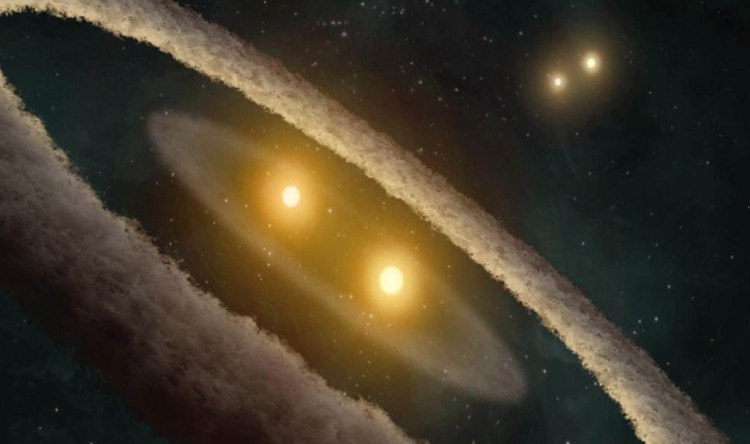Hypothesis of the lost brother of the Sun.
A group of American astronomers modeled out that the Sun could form with a twin star named Nemesis.
Researchers at the University of California, Berkeley (UC Berkeley), USA found evidence that the Sun has a twin copy named Nemesis, according to Science Alert. Preliminary research results are published in the April issue of arXiv.org.
Many stars have a companion copy, including the closest three-star system to Alpha Earth, Alpha Centauri . For a long time, astronomers constantly sought to explain the existence of binary and trinomial systems. They also predict that some binary star systems have separated, creating individual stars. Researchers are very interested in the possibility that the Sun has a copy of Nemesis but has not found it.

The mathematical model of astronomers points to the Sun forming in binary star systems.(Artwork: NASA).
The UC Berkeley team restarted the search for Nemesis after observing the recently formed stars in the constellation Perseus . They designed a mathematical model and found that it was only possible to explain star observations in the constellation Perseus if it assumed that every star had a twin version.
"We think Nemesis can last a long time ago , " said Steven Stahler, an astronomer at UC Berkeley, a member of the research team. "We ran a series of statistical models to see if we could explain the number of single young stars in the constellation Perseus. There is only one model that provides consistent data, that's all. At first, it was born in a wide binary star system, these systems shrink or split for a million years. "
The binary star system is only two stars at more than 500 astronomical units (AU). An astronomical unit is the average distance between the Sun and the Earth (150 million km).
Based on the model, the Sun's twin copy is likely to escape from the binary star system and mingle with the stars in our region in the Milky Way.
"The hypothesis that many stars form with twins has been given before, but the question is how many stars are there. According to our simple model, almost all stars form. with a copy, the constellation Perseus is considered a typical low mass star formation, but we need to test the model with other constellations, " said Sarah Sadavoy, researcher at the Celestial Observatory Smithsonia, writer.
- The 10 most interesting mysteries of lost civilizations (Part 1)
- Test hypothesis 'Matrix'
- Hypothesis of the past, present, future coexists in the universe
- 4 reasons why travelers lost luggage at the airport
- The adopted brother of the Soviet Union caused fascist tankers to be horrified
- Men who have a brother have a higher chance of becoming gay
- Check the vacuum hypothesis
- Find children with DNA - tragic things in tears
- History of Moon formation
- Eat all the bait
- New shocking hypothesis about MH370
- The man with the art of finding stolen things
 Van Allen's belt and evidence that the Apollo 11 mission to the Moon was myth
Van Allen's belt and evidence that the Apollo 11 mission to the Moon was myth The levels of civilization in the universe (Kardashev scale)
The levels of civilization in the universe (Kardashev scale) Today Mars, the sun and the Earth are aligned
Today Mars, the sun and the Earth are aligned The Amazon owner announced a secret plan to build a space base for thousands of people
The Amazon owner announced a secret plan to build a space base for thousands of people